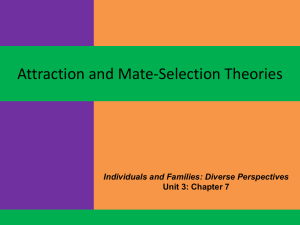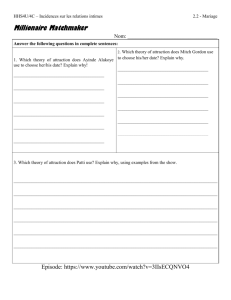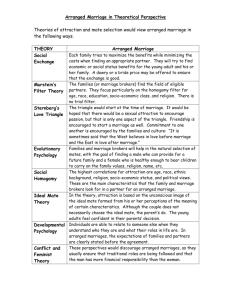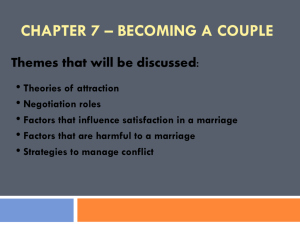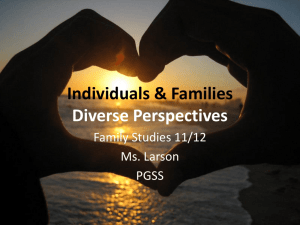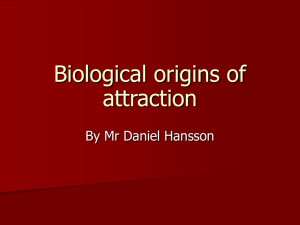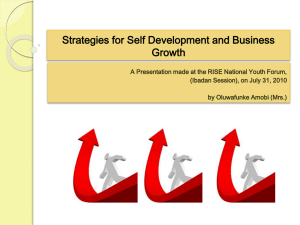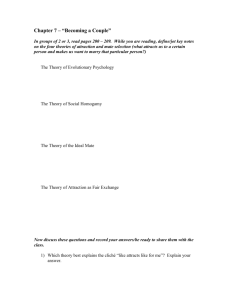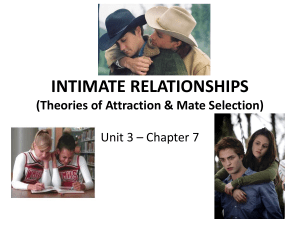Murstein*s Filter Theory
advertisement
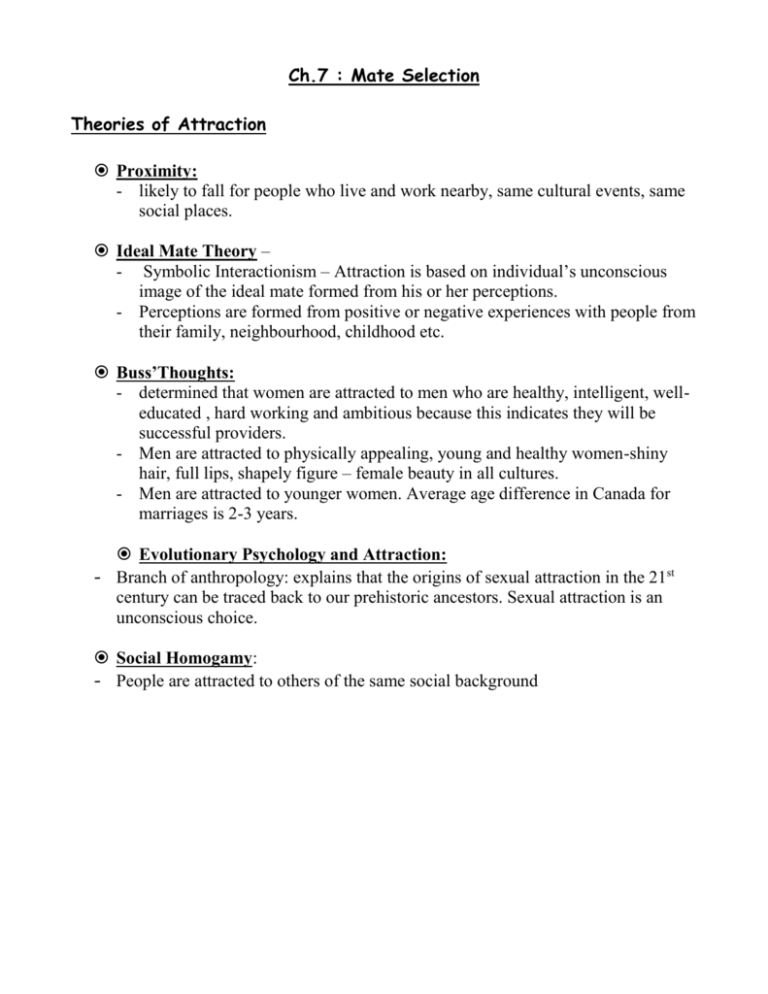
Ch.7 : Mate Selection Theories of Attraction Proximity: - likely to fall for people who live and work nearby, same cultural events, same social places. Ideal Mate Theory – - Symbolic Interactionism – Attraction is based on individual’s unconscious image of the ideal mate formed from his or her perceptions. - Perceptions are formed from positive or negative experiences with people from their family, neighbourhood, childhood etc. Buss’Thoughts: - determined that women are attracted to men who are healthy, intelligent, welleducated , hard working and ambitious because this indicates they will be successful providers. - Men are attracted to physically appealing, young and healthy women-shiny hair, full lips, shapely figure – female beauty in all cultures. - Men are attracted to younger women. Average age difference in Canada for marriages is 2-3 years. Evolutionary Psychology and Attraction: - Branch of anthropology: explains that the origins of sexual attraction in the 21st century can be traced back to our prehistoric ancestors. Sexual attraction is an unconscious choice. Social Homogamy: - People are attracted to others of the same social background Murstein’s Filter Theory Bernard Murstein explained the relationship among dating, social homogamy, and social exchange as a multi-step process. He uses the analogy of ‘sifting’ to suggest that individuals pass their dates through a series of ‘filters’ to screen out unacceptable marriage partners. This process of filtering leads an individual to only let one acceptable partner through, which ultimately leads to marriage. Field of Eligibles Who is out there, the general population. Propinquity Filter Who is close to us. An available group to choose from. (proximity) Attraction Filter (Physical attraction/Personality) Judgment based on appearance and individual characteristics Homogamy Filter (Age, Race, Education, SocioEconomic Class, Religion) Judgment based on how similar these factors are to the individual. Compatibility Filter (Temperment, Attitudes and Values, Needs, Roles, Habits) Judgment based on similarities of these more intangible qualities Trial Filter (Cohabitation, Engagement) Statement of commitment here. Test of the compatibility of all previous filters. Decision Filter Final decision is made here to see if individual is the right choice. Marriage
